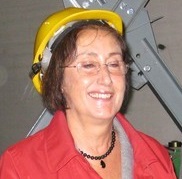Academic career
She started her career as a researcher of the National Institute for Nuclear Physics at the Frascati National Laboratory in 1976. She collaborated with research projects at CERN, in particular the ISR and the WA44 experiment. Between 1985 and 1998 she participated at the ZEUS experiment at the DESY research center in Hamburg. [1]
In 1988, Votano became Senior Researcher and in 2000 she was promoted to Research Director. [1] She covered the role of coordinator of the OPERA experiment, whose data collection started in 2006 and resulted in the detection of 5 tau neutrinos from muon neutrino oscillations. In 2009, the board of directors of the INFN appointed her as Director of the Gran Sasso National Laboratory; she was the first woman to cover this role, which she held until 2012, when she was succeeded by Stefano Ragazzi. [5]
Her reaction to the media coverage following the appointment to the prestigious role was two-fold: on one side she deemed it positive, as it highlighted the fact that "finally a woman had conquered a position at the top of the scientific leadership"; on the other hand it was negative, "because if that was the norm, [the news of the appointment] would not have caused any clamour". [4] [6] In 2011 at an international symposium held in Vatican City, he gave a talk Achievements in Subnuclear Physics at Fermilab. [7] In 2011 she gave a talk Origin and Status of the Gran Sasso Laboratory at the international symposium on subnuclear physics held in Vatican City. [8]
As of 2020, she is part of the 600 scientists currently working on JUNO, a neutrino experiment under construction in Southern China. [9]
